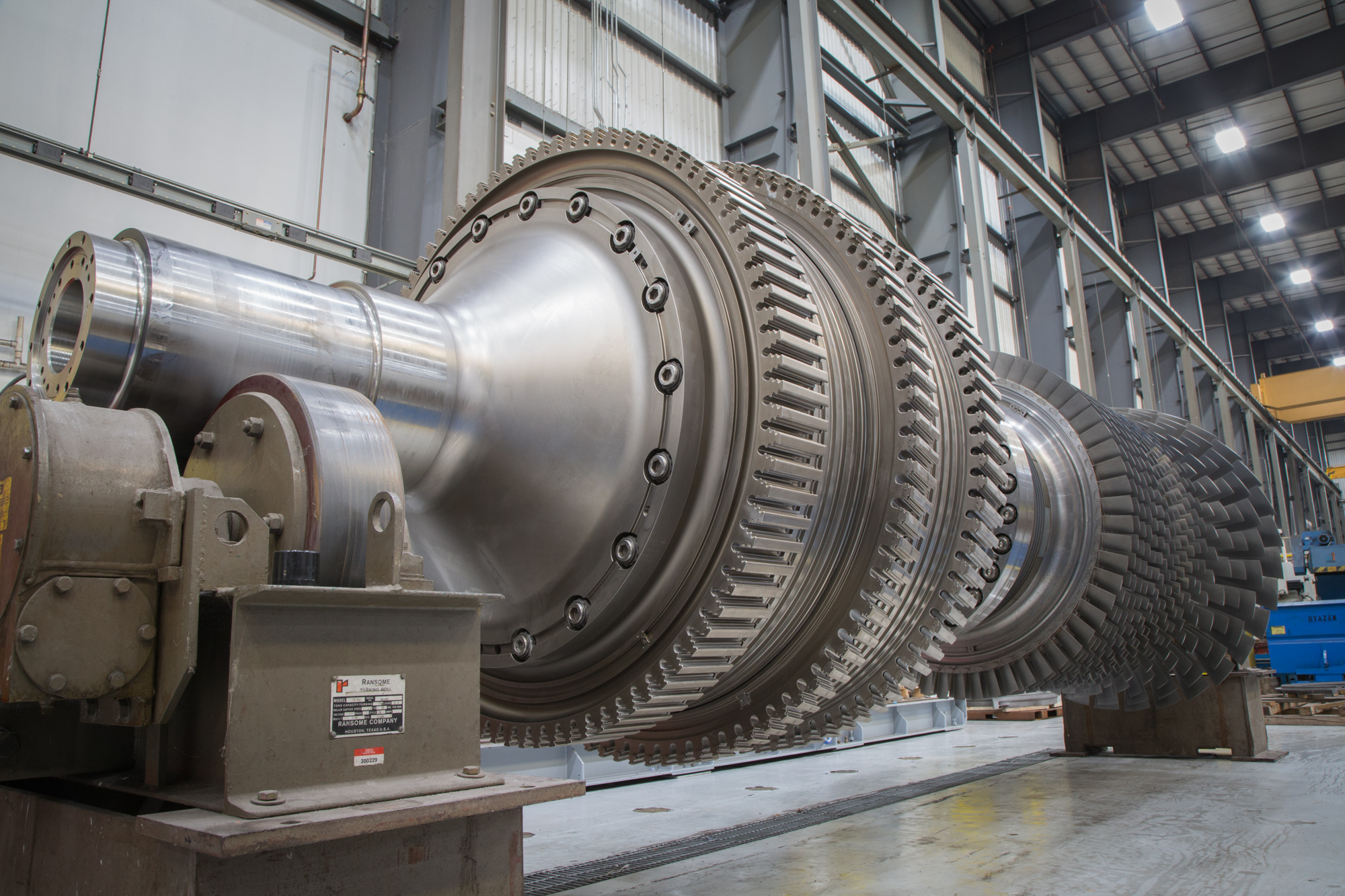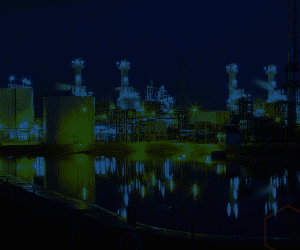Are you prepared for the coming “rotor wave?”

By Jeff Schleis, EthosEnergy
Natural-gas-fired powerplants are an essential part of our energy infrastructure, providing a significant portion of the electricity we use every day. But stricter environmental regulations and increased social pressure for a healthier environment have brought new challenges to the operation of these critical facilities.
In recent years, the energy industry has experienced a major shift toward renewable energy sources while coal-fired plants are retiring and the demand for electricity continues to increase. The massive push for cleaner energy can be observed in several ways, including these:
- Net-zero pledges. Governments, industries, utility companies, data centers, and petrochemical companies worldwide are pledging to achieve net-zero carbon emissions, aiming to reach this goal by as early as 2035, but no later than 2050.
- Restrictions on natural-gas use. As an example, some state and city mandates now ban the use of natural gas for residential consumption in new construction—a clear indication of the growing aversion to fossil fuels.
- Increased electrification. One of the major driving forces behind a predicted increase in power consumption is increasing electrification. This is visible in the growing popularity of electric vehicles (EVs) over internal combustion engines (ICEs), and the adoption of electric heat pumps for heating instead of natural gas, etc.
- Renewable incentives. Renewable sources such as energy storage, solar, and wind have become significant investment areas with incentives coming from city, state, and federal government programs.
Bridging the gap. While the majority of investment and focus in electricity production has been in renewable sources, natural-gas-fired generation still accounts for over 22% of generation globally and nearly 40% in the US (2022), with that domestic figure up from 32% five years earlier. Thus, despite the large growth in renewable energy, there is still an increasing dependency on natural-gas-fired generation.
Gas turbines are increasingly being relied upon to bridge the gap to the energy transition, as baseload generation from coal and nuclear decline. This brings serious challenges to the industry given the limited investment in natural gas amidst the push to net-zero. In broad terms, these units are being pushed to operate much differently than they have been in the past, and in the case of legacy units, being asked to run longer than their original design lives.
Among the operational challenges faced by gas-turbine owners are increased cycling, grid instability, faster startup requirements, and power price instability. The details:
- Increased cycling. The increase in variable generation from renewables and retirement of large coal-fired baseload plants requires gas-fired plants to ramp up and down, or start and stop their gas turbines, more frequently than originally designed, placing additional stress on the equipment.
- Grid instability. Utilities must still meet grid demands when renewable sources like wind or solar cannot, calling on natural-gas-fired generation to meet the demand. Additionally, renewables are vulnerable during extreme weather events, further increasing the criticality of natural-gas power generation.
- Startup requirements. Reliably starting units (including minimizing the time it takes to start up) is essential for adapting to the changing energy landscape, ensuring natural-gas standby (peaking) generation comes online in a timely manner when wind and solar generation are lacking.
- Power price instability. The volatility in power prices is closely related to the instability caused by the variable nature of renewable energy sources and their inability to provide power during extreme weather events. Ironically, without this effect it would be difficult for many peaking powerplants to maintain profitability.
The life extension challenge. In addition to juggling the operational challenges in today’s energy markets, gas-turbine owner/operators also may face critical decisions on life extension of their legacy units. Reason: GE heavy-duty gas turbines (Frames 5, 6B, 6E, 7E/EA, 7F, and 9E/F) have strict runtime limits—including total number of starts and total running hours, as outlined by the OEM in its Technical Information Letter (TIL) 1576.
Many of these units are coming to their hours or starts limit and owners face a major decision on a path forward. Should they:
- Sell or decommission the plant?
- Reconfigure the plant to adopt a new gas-turbine frame type/technology?
- Attempt life extension via rotor replacement (like-for-like swap) with a new or refurbished, grey-market turbine?
Selling or decommissioning is certainly an option, and some owners may prefer this and look to invest in renewables. However, the demand for reliable gas-fired generation is hard to ignore and is still an attractive investment. Taking additional gas plants offline only increases the burden on and challenge to those that remain.
Reconfiguration to a more efficient gas-turbine technology is attractive to some. However, the large investment also requires extensive downtime to install and make the modifications necessary (not to mention the lead time required to procure/manufacture a new unit), meaning the plant will not generate revenue for a considerable period of time.
Life extension via rotor replacement is routinely the most attractive option at the end of rotor life despite it being a significant capital investment—in large part this is because it requires the least amount of downtime if planned carefully.
The options for gas-turbine rotor replacement come down to new versus used, but not all used rotors are the same, even if they might be the same frame type and model. There are technical details to consider before a rotor swap, and in some cases, customizations will be necessary. These are among the things that a qualified engineering team should assess. Other considerations include growing lead times and increasing demand for rotors and their parts.
To address the market for rotor replacement, both OEMs and independent service providers of gas turbines have focused on providing alternative solutions to purchasing new rotors. Example: EthosEnergy, the OEM for mature Westinghouse and Fiat gas turbines, has developed life-extension solutions for GE’s fleet that are flexible, depending on the desired runtime and goals of the plant.
One of these solutions, the Phoenix Rotor™, uses a “seed” rotor and replaces only the life-limiting parts defined from an extensive re-engineering effort. The remaining parts are inspected and refurbished or replaced as needed, providing a more environmentally friendly solution with up to the equivalent life of a new rotor that also meets the operational needs of the plant.
In conjunction with this, EthosEnergy has also developed the industry’s first lifecycle assessment (LCA) solution for gas-turbine rotors. Created in partnership with leading scientists, the new CO₂ assessment tool provides comprehensive environmental insights across each phase of the lifecycle, quantifying the carbon and financial reductions you can make from rotor life extension compared with purchasing new.
The research has been conducted in partnership with Politecnico di Torino in Italy, where studies show carbon emission savings and abiotic depletion of up to 40% from rotor life extension.
Wrap up. Whether net-zero can be achieved by 2035, 2065, or somewhere inbetween, gas-turbine rotor life extension is certain to be a vital part of the transition, particularly in the US. Renewables will continue to make headlines, but it is abundantly clear that the vision won’t be achieved without reliable production from natural-gas-fired plants as their stakeholders navigate the complex set of challenges.
About the author
Jeff Schleis, EthosEnergy’s chief engineer for products and applications, is an experienced product manager with a career founded in turbine controls. Following his professional start as an engineer in the nuclear power industry, Schleis has spent more than 25 years managing products for OEMs and independent suppliers—including Woodward, GE, Siemens-Westinghouse, and EthosEnergy. He has been with the last since 2002.





